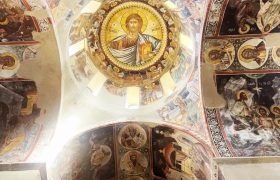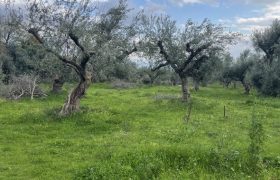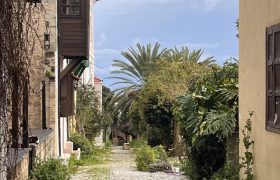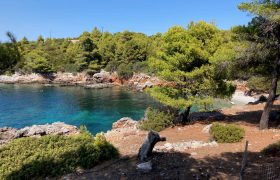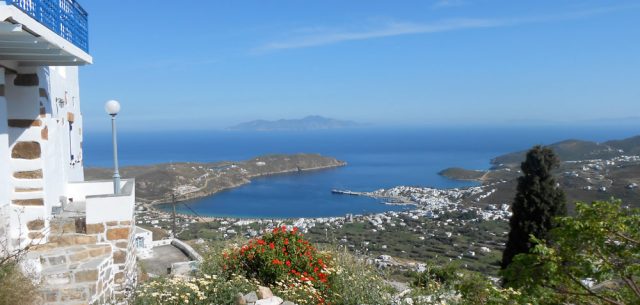The Call of Delphi
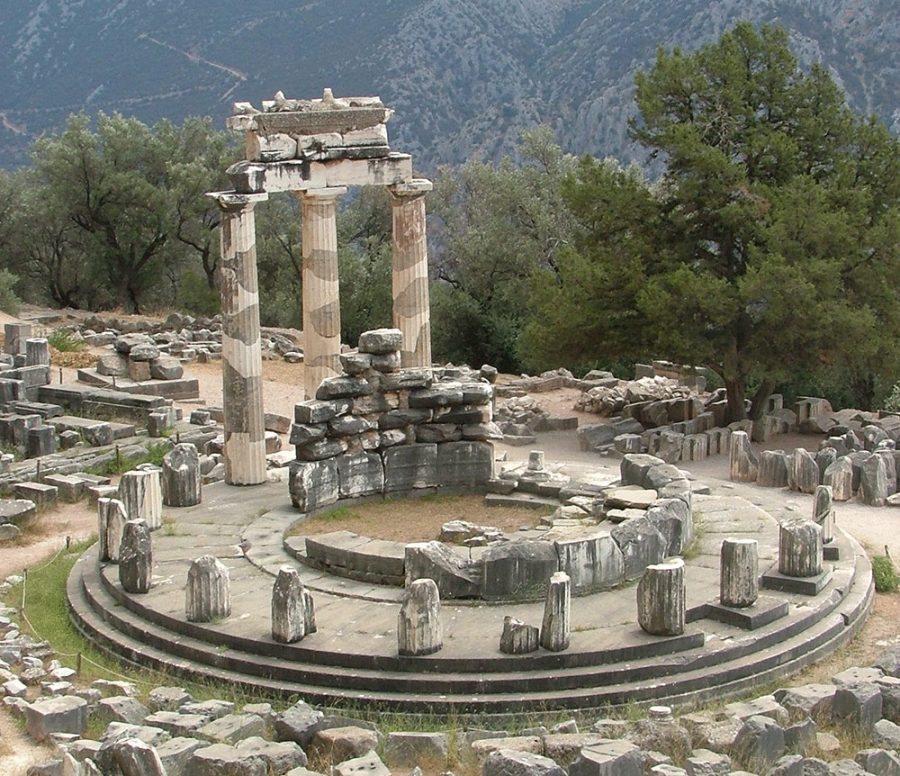
Indian novelist Radhika Jha, who has recently relocated to Greece, visits the Ancient Navel of the World and finds much still to stir the senses at this enigmatic site.
There was a time when a trip to Delphi could change the course of a life. Or of a nation. Now, this epic historic site lies a mere two hour car journey away from Athens and can be digested in half a day. When I think of Delphi, I think of the Oracle’s famous parting words to the last pagan emperor Julian the Apostate (331-363), “Tell the king that the beautiful edifice has fallen, Apollo has neither hut nor laurels, the source has dried up, the water speaks no more.”
Yet some of the magic lives on in the beauty and majesty of the landscape. Delphi is Greece condensed into a single eyeful. Look right and you see wave upon wave of grey-green mountains. Look left and a sea of silver green olive groves, the oldest in Greece, meet the eye. Look up and a sheer cliff face towers above you, dominating the sky. Look down and you can see the narrow ravine with its sheer black walls, where legend has it the python who protected the first Pythia lived.
But the archaeological site itself was initially disappointing as nothing remains except a jumble of foundation stones. The past felt terribly `dead’ and the present rather boring. Until I arrived at a curiously shaped oval stone that reminded me strongly of the lingam, symbol of the Hindu God Shiva. The placard in front of the stone informed me that what I was looking at was in fact the `omphalus’, or the navel of the world.
Legend has it that in order to find the exact middle point of the earth Zeus set two eagles free[1] from opposite ends of the earth and the spot where they met he marked with a stone, the `omphalus’ . All of a sudden, the place came alive for me and I could see just how Delphi must have looked to the ancient Greeks.
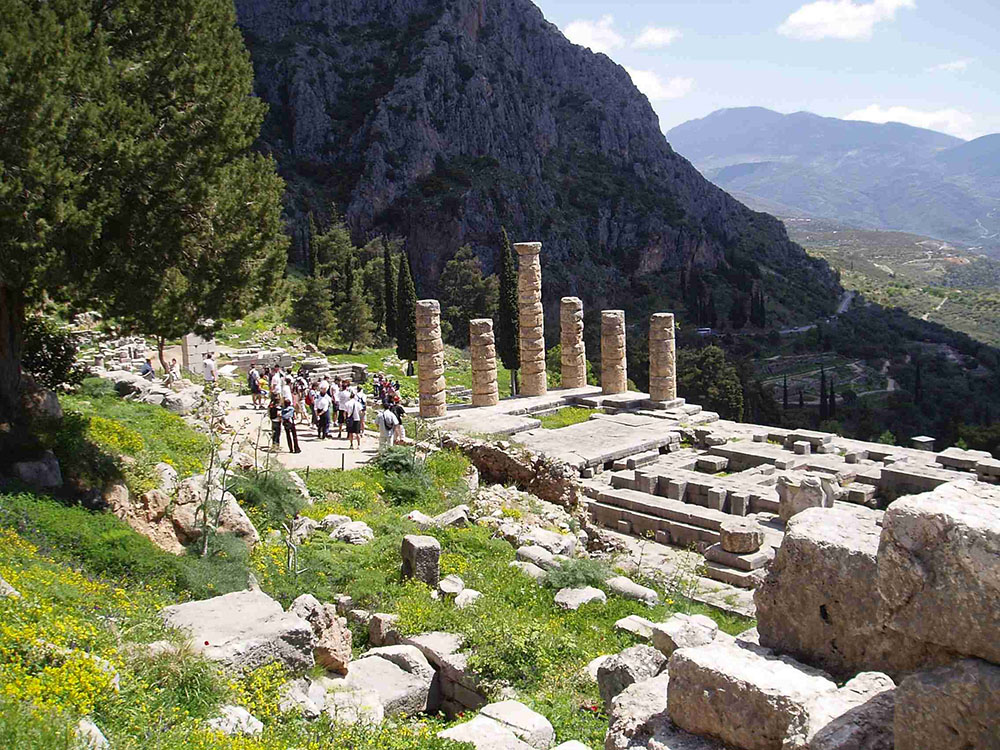
Delphi is Greece condensed into a single eyeful
They would have come by boat. Then, leaving their boats at the port town of Itea, which I could see as a white frill on the edge of the water, and loading their precious gifts onto mules or bullock carts, they would have begun the journey up the valley through olive groves and chattering streams. They would have been in great spirits, laughing and singing as they walked.
As they entered the ravine and began to climb up the flank of the mountain, their laughter would have given way to silence, awe, as Delphi, a shining city of marble, glinting like a jewel in the sun, appeared above them.
For me, the Museum is the true jewel of Delphi. Here you can see some of the best sculptural works of the Archaic (5th century B.C.) and Classical (3rd century B.C.) periods. A giant sphinx in the first room quite literally knocks you off your feet. And don’t miss the dancers, a group of three beautiful Dionysian priestesses decorating the top of a giant Corinthian pillar. But the sculptures of the male athletes are the real show stoppers, mind boggling in their realism and beauty.
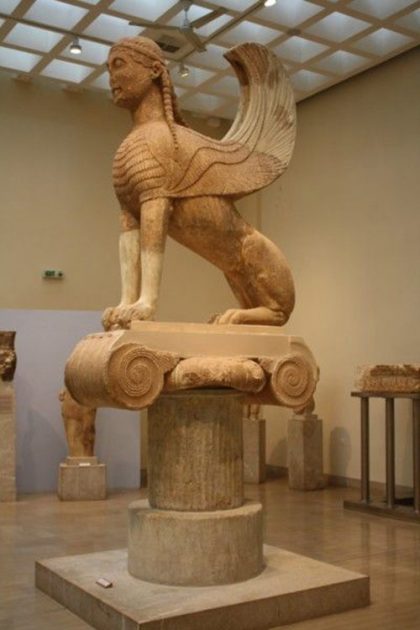
Delphi Museum’s showstopping Sphinx
Best time to visit…
It is probably wise to visit the present day site in the early morning, before the sun beats down on the rocky hillside, or go in October-November when it is cooler.
Don’t miss…
Though it is a tough walk uphill, do not miss the site of the Pythian games. Surrounded by pine trees, one can almost see the beautifully-dressed lords and ladies applauding the athletes and in the rustling of the pines, hear the musicians heralding the winners.
Eat…
At taverna Phivos on the Main Street or taverna Dion, one street behind, with charming outdoor seating on the stairs. Both serve good Greek food including the local specialty, lamb cooked with lemon.
Stay at…
Hotel Amalia, five star luxury with a swimming pool and great views. Or, more charming with a great Greek breakfast, Hotel Kastalia
Vasileon Pavlov and Friderikis 13, tel: +30 2265 082205
Top things to do near Delphi
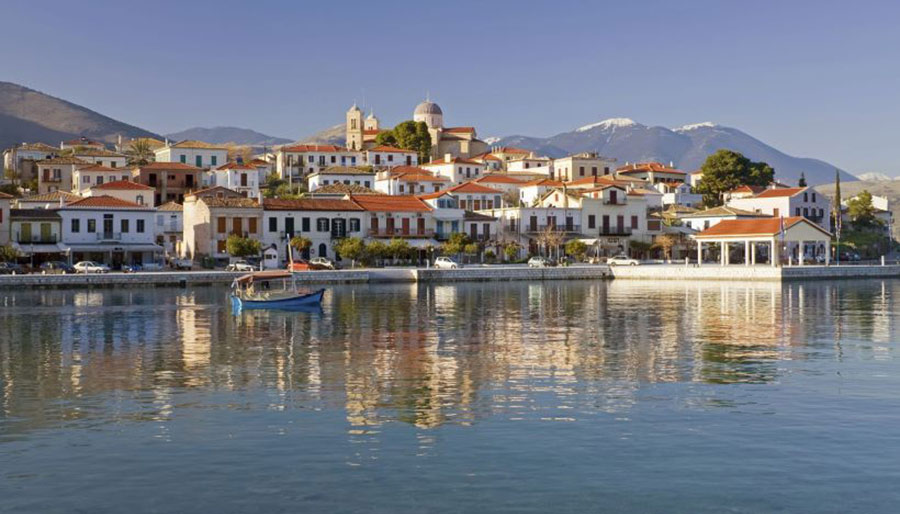
Be charmed by Galaxidi
The tranquil Byzantine monastery of Ossios Loukas, 40 kilometers south of Delphi, is renowned for the elegance of its Byzantine architecture and frescoes. The faces that stare down at you are so alive they could be portraits of people today.
Trek over the Elysian Fields of Mount Parnassos and watch the sunset from the summit. Or, if you prefer, from the balcony of a bar in the chic little alpine village of Arahova, clinging to the flanks of Mount Parnassus. This old village with winding streets that climb steeply upwards and old houses has managed to combine the chic of a ski resort village with old Greek charm. The town center is lively and full of excellent tavernas. Have a coffee or an aperitif at one of the bars on the central square. And don’t miss the marzipan sweets for which the village is famous.
Drive to the idyllic town of Galaxidi, across the bay for a great blend of 18th century charm and modern day amenities like excellent cocktails and DJs. Stay the night at hotel Galaxa, a charmingly restored 18th century house.

